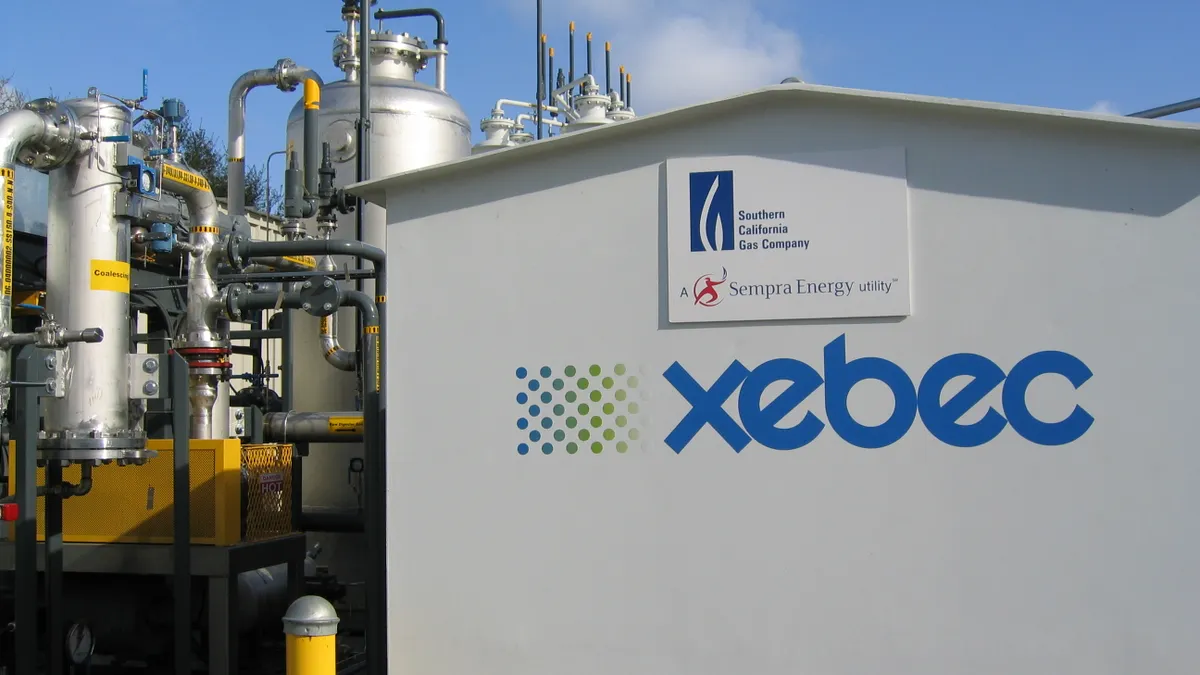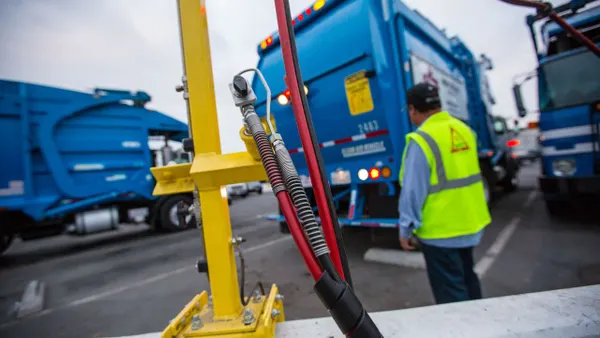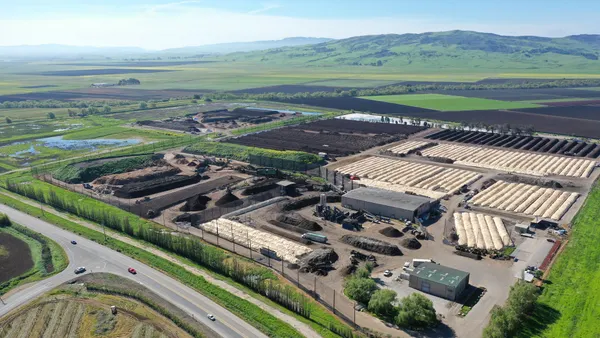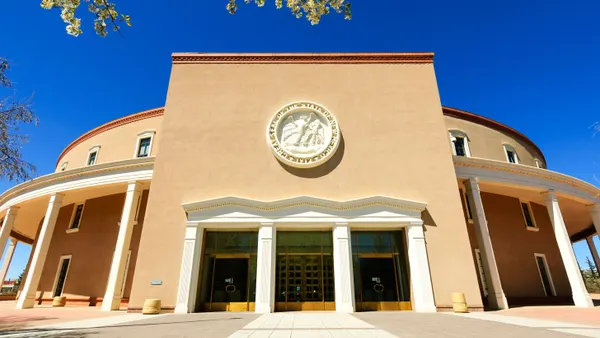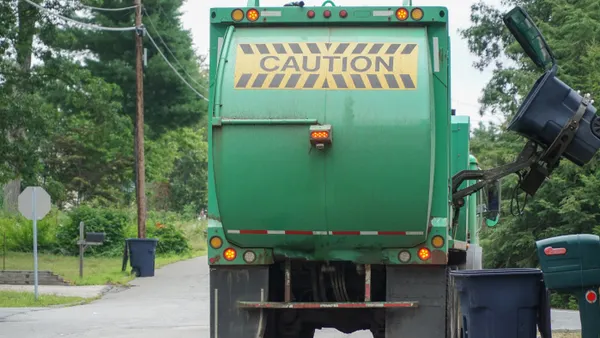Dive Brief:
- There is enough feedstock in the U.S. to increase the biogas energy production capacity eight times over, or by an additional 17,000 projects total, the American Biogas Council said in a report released June 4.
- The industry group identified well over 100 million tons of available feedstock available for such facilities, including surplus food, farm animal manure and biosolids, also known as wastewater sludge.
- The industry remains niche compared to other energy sources in the U.S., but continues to receive political support both at the federal and state level. ABC profiled individual states and identified which could increase biogas energy production capacity the most, including Iowa, Minnesota and North Carolina.
Dive Insight:
The industry group's report tracks with other analyses identifying prospective growth in the biogas space. Last year, WoodMackenzie released its own report finding 90% of the potential for North American landfill gas projects remains untapped. That report also highlighted growing operational efficiencies in the space that could accelerate the deployment of biogas energy production capacity.
ABC has tracked the quickening pace of project deployments in recent years. In February, it reported that the number of new facilities that came online in 2024 grew 17% year over year, while the amount of capital invested in biogas projects grew 40% year over year.
At full buildout, the nation's fleet of biogas facilities could generate 255 billion kilowatt-hours of electricity annually, per ABC's latest release.
"We need more systems built. For the billions of tons of waste the nation produces each year, the U.S. has too few biogas systems to manage it. This new data reveals the immense benefit that building more biogas systems would bring,” Patrick Serfass, executive director of ABC, said in a statement.
California's current biogas production capacity is among the highest in the nation, but it also has the greatest remaining potential to capture biogas. If it purified an additional 410.5 billion cubic feet of biogas each year, it could refine it into enough renewable natural gas to replace nearly 14% of the state's petroleum-based natural gas consumption, ABC estimates.
Other states with high remaining total biogas output potential include Texas, Pennsylvania, Michigan and Georgia. Meanwhile, states like Iowa, Minnesota and North Carolina could stand to build the most new facilities. Iowa, for example has 45 biogas systems operating today, but could build an additional 2,915 systems, according to ABC. That’s mainly due to its agriculture, especially swine, and the resultant manure produced.
Vermont has built the most facilities of any state given available feedstocks — the industry group says it’s reached 36% of its potential buildout. Iowa, by comparison, has completed just 2% buildout.
The industry group has advocated for policies that support these expansions. They’re currently pushing to preserve favorable tax credits in the reconciliation bill working through Congress. The House version of that bill extended an alternative fuels credit favorable to the industry, and several senior Republican senators have indicated they support preserving similar credits.
Correction: A previous version of this story included electricy generation data from an outdated version of American Biogas Council’s release. ABC now estimates that a full buildout of the nation's fleet of biogas facilities could generate 255 billion kilowatt-hours of electricity annually.



